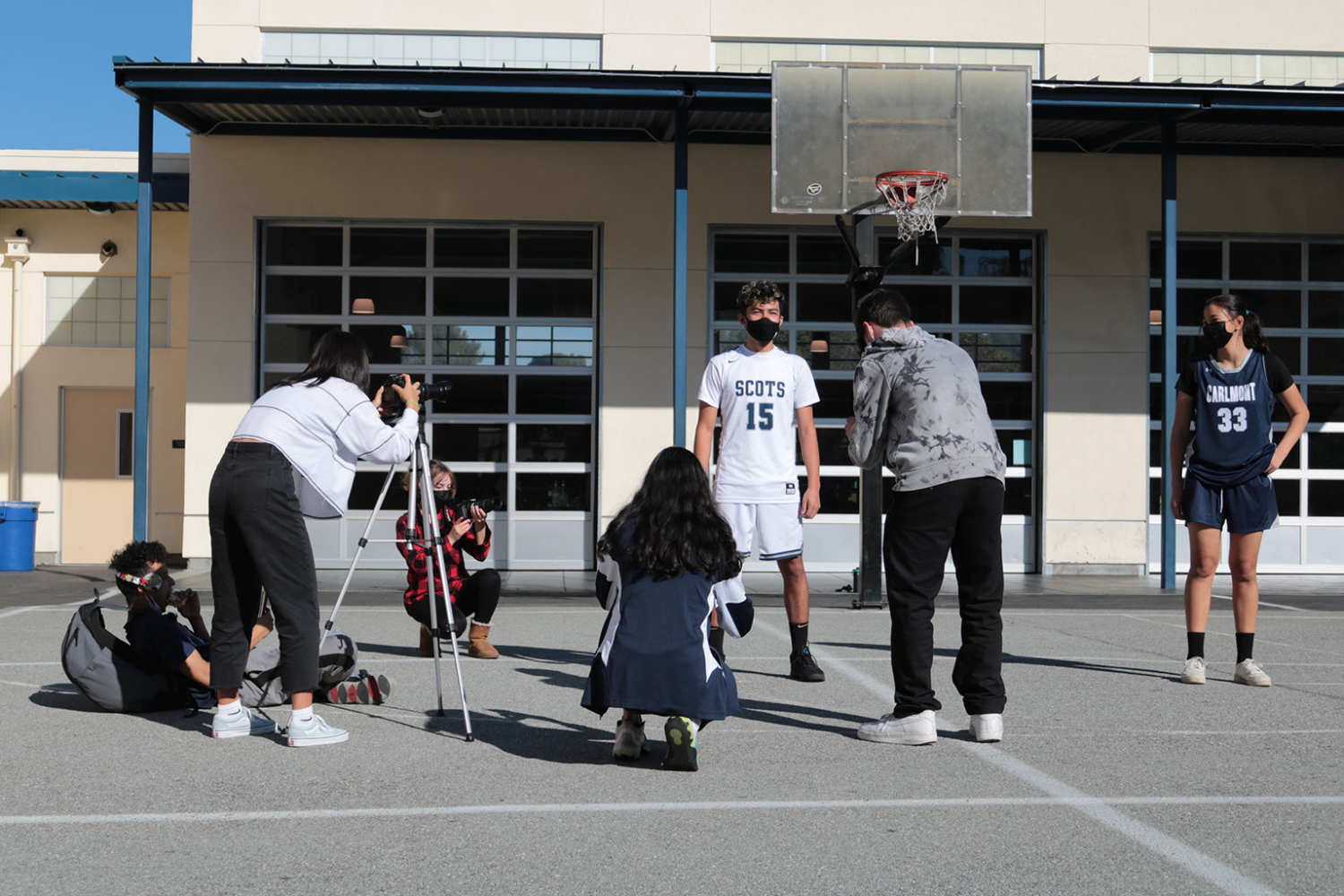

Twitter: @KianaBeigi


April 10, 2022
A young girl entered a sporting goods store, hoping to find a new pair of basketball shoes. What did she find? Nothing. Nothing for her, at least. The walls were lined with shoes for boys, with only a small selection tailored to girls. She left the store empty-handed, wondering if one day, she’d find the perfect pair.
One hundred and eighty million. That’s how much the highest-paid athlete in the world makes, according to Forbes. Mixed martial arts fighter Conor McGregor took the title in 2021, and 10 other male athletes followed him. It wasn’t until spot 12 that a female showed up on the list, Naomi Osaka, earning $60 million. Only two out of the 48 recorded athletes were women, both tennis players.
Why is this?
Every day, women constantly face the issue of being relegated to downgraded playing conditions.
Ava Gaboury, a sophomore on the girls varsity soccer team, describes an inequality she has experienced.
“In my club, we always have the tiniest corner of the field while the boys teams have the rest of it. I see that, and I wonder, ‘Do we matter to them?'” Gaboury said.
Women are also presented with lower-quality jerseys and equipment. According to a report conducted on gender equity issues in the 2019 National Collegiate Athletic Association (NCAA) tournament, it was discovered that they spent $35 million more on the men’s tournament than they did on the women’s.
Not only are jerseys lower quality, but they are also seen as more skimpy to “please the eye.”
Chelsea Hayes, a professional beach volleyball player, spoke about an imbalance she encountered in her career.
“In women’s sports apparel, I feel that it is a little sexier,” Hayes said. “To put it simply, sex sells. But for men, they wear more conservative and athletic clothes.”
Before the recent change in 2012, women beach volleyball players in the Olympics were required to wear a bikini. The head broadcaster of the 2021 Tokyo Olympics said that things would be different this year. They would not publicize sexualized images of female athletes and instead focus on “sports appeal, not sex appeal.”
The young girl decided to look online after she got home. She searched endless websites but only found shoes by players like Kyrie Irving, Lebron James, and Kevin Durant. She never saw a single pair of shoes by her favorite women’s basketball player or by any woman at all.
Famous athletes, primarily male, are signed with many brands such as Nike, Under Armour, and Adidas. Some male athletes earn more than half of their income from endorsements, not their success in games. Women’s sports sponsorship accounted for only 0.4% of total sports sponsorship, according to Women In Sport, a charity pushing for change in sports gender inequality.
“A lot of companies have a token female as their spokesperson, and then every other ad they do is of another male athlete. It feels like they’re throwing a woman into the situation because they are afraid of being canceled,” said Emily Mannion, who plays lacrosse.
Companies often use a singular female as their representation and are vastly outnumbered by their male counterparts.
“For men, I think they’re just a lot more athletic than women. Men make more powerful moves like dunks and similar things while women do a lot more passing which is not as exciting,” Hayes said.
From the beginning of time, it has been said that men are naturally more athletic than women. Men have higher testosterone levels, so they can gain more muscle and do so much faster than women. However, that doesn’t automatically make men’s sports more appealing.
There has been a continuous discussion about whether opposite genders generate different entertainment experiences. Some people prefer the more aggressive, stronger moves, while others prefer the more strategic, team-oriented game.
Richard Stephens, the girls varsity basketball head coach, expressed his opinion on the topic.
“[Women basketball players] tend to play the game in a more pure form. They don’t play above the rim, it’s not all dunks, and they have to work to create shots,” Stephens said. “Women have to be crafty and smart whereas men can just use their size and strength to score.”
The ongoing debate of whether women’s or men’s sports are more entertaining to watch leads to another question: is it really that women’s sports don’t attract as many viewers, or are they just not given the same publicity as men?
“You have to work to find somewhere to watch women’s sports. If women had the funding and the capabilities to be televised properly, I think they would acquire the same amount of revenue and entertainment level as men,” Gaboury said.
A report by the University of Southern California (USC) News discovered 95% of total television coverage on the Entertainment and Sports Programming Network (ESPN) and SportsCenter focused on men’s sports rather than women’s.
“Unfortunately, there’s always going to be a percentage of males out there that will have a mindset that [women’s sports] is just not as good. But we have seen in women’s soccer and tennis that the popularity is just as high, if not more,” Stephens said.
By the age of 14, girls drop out of sports at a rate twice as high as boys, according to the Women’s Sports Foundation. There are several reasons behind this, but the main one stays constant throughout the years — the pay gap.
“I’m discouraged from pursuing a career because I’m thinking, ‘Am I getting paid minimum wage to play a professional sport?’ Women’s sports are inferior, which is not true, but it is played as that,” Gaboury said.
Women worldwide face the same issue of not being able to follow their dreams because of the significantly lower pay. On the other hand, men are often pushed into becoming professional athletes due to their high success in the industry.
“A lot of times, you can’t really support yourself and your family with the pay that women athletes are getting,” Hayes said.
Defeated, the young girl searched deeper into the reasons behind the small amount of female representation in sports. Upon browsing, she found multiple foundations supporting the cause, as well as her favorite players speaking out for what they believe in.
Megan Rapinoe, a soccer player on the U.S.Women’s National Team (USWNT), symbolizes gender equality for all women in sports. She has been publicly fighting for a change in the sports pay gap by using her voice and not being afraid to take legal action. In 2019, USWNT filed a lawsuit against the U.S. Soccer Federation alleging pay discrimination.
“There is definitely more room to change. But I think activists, like Megan Rapinoe, have made a really big difference just by being loud and sharing what they have to say,” Mannion said.
Not only are athletes starting to speak out about gender inequality, organizations like the Women’s Sports Foundation, Play It Forward Sport, and Sports Equality for Women are also advocating for more significant change.
“We still have a ways to go for equality,” Stephens said. “More people have to raise awareness and demand to be treated equally.”

